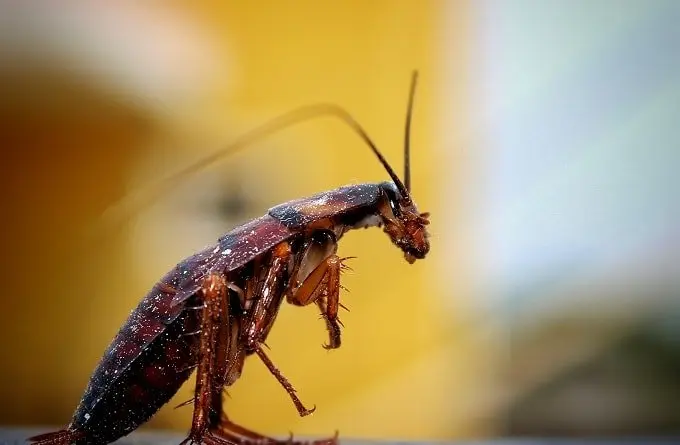What Attracts Roaches the Most
 Cockroaches are hardy pests that have existed for millions of years. Their resilience and adaptability have made them formidable home and business adversaries.
Cockroaches are hardy pests that have existed for millions of years. Their resilience and adaptability have made them formidable home and business adversaries.
Understanding what draws them is essential in combating an infestation and preventing future ones. This article dives deep into the primary attractions for these nuisances.
Food Sources
Arguably, food is the primary attraction for cockroaches. They are not very picky eaters, making many households vulnerable to their invasions.
- Starches and Carbohydrates: Cockroaches love grains, bread, and potatoes. They are particularly attracted to foods that have been left out and are easy to access. This also includes crumbs on the floor, countertops, and even cabinets.
- Sweets: Sugar-rich substances like spilled soda, fruit, candy, and baked goods are significant draws for these pests.
- Grease and Protein: Meat products, oil spills, and greasy residues can lure cockroaches into kitchens and dining areas.
- Other Edibles: Cockroaches can and will eat a variety of unusual items, including leather, glue, and even hair. This wide dietary range means they can thrive in diverse environments.
Water Sources
Water is vital for the survival of cockroaches. They can go for months without food but only a week or so without water. This makes any source of moisture, from leaky pipes to condensation, a potential beacon for these insects.
Areas prone to water collection, like sinks, bathtubs, and plant pots, are among their preferred habitats. Additionally, homes with high humidity can inadvertently provide an environment conducive to roaches.

Shelter
Like all creatures, cockroaches seek shelter from potential threats and environmental elements. Their flat, flexible bodies allow them to squeeze into incredibly narrow spaces, and they prefer:
- Darkness: Being nocturnal, cockroaches are naturally drawn to dark, secluded places to avoid predators and rest during the day.
- Warmth: Warm environments are particularly inviting. This is why infestations commonly start around appliances or in areas with higher temperatures, like kitchens and laundry rooms.
- Cracks and Crevices: The nooks and crannies in structures, behind baseboards, within wall voids, or under appliances offer perfect hideouts for roaches.
Waste
Trash cans and garbage heaps, especially if not sealed or cleared regularly, are veritable feasts for cockroaches. The combination of food scraps, moisture, and shelter in these areas is almost irresistible to these pests.
Decomposition
As scavengers, cockroaches are drawn to decaying organic matter. This includes decomposing plants, dead animals, and even other insects. This trait makes them vital for the ecosystem, as they help break down and recycle organic materials. However, it also means that areas with a lot of decaying matter are hotspots for roaches.
Pheromones
Roaches use chemical signals, or pheromones, to communicate with each other. These pheromones can indicate potential mates, food sources, or safe shelters. Once a few roaches have infiltrated a location and deemed it suitable, they release pheromones that can attract even more of their kind.
Combatting the Roach Attraction
Knowing what attracts cockroaches is the first step to combatting and preventing infestations. By keeping homes clean, storing food securely, fixing leaks promptly, and regularly inspecting potential hiding spots, homeowners can significantly reduce the risk of a roach problem.
Furthermore, it’s wise to seal any gaps in walls or floors, maintain a dry environment, and be cautious when bringing used appliances or furniture into the home. These items could potentially harbor cockroaches or their eggs, inadvertently introducing them to a new environment.
What Do Roaches Hate?
Cockroaches hate all kinds of lights. They like to live in the dark, garbage, or noisy places and always want to stay hidden in the dark places where lights never come. Cockroaches also hate clean areas, household pests, baits, mint oil, Osage orange oil, etc. If you want to know what organic things roaches hate, then use small catnip.
Catnip is 100 times as effective in cockroaches and is also organic. Bay leaves, garlic, hedge apples, and cucumbers kept cockroaches away. You can use any of those to keep roaches from home.
Conclusion
In conclusion, cockroaches are drawn to environments that offer food, water, shelter, and suitable breeding grounds. By understanding these attractions and addressing them proactively, reducing the chances of facing a cockroach infestation is possible.
If roaches become a problem, however, remember that pest control professionals are equipped with the knowledge and tools to help manage and eliminate these persistent pests.

James E. Butkovich, Pest control maven with a knack for eco-friendly & Chemical solutions. Blogger with a mission to make homes pest-free, one post at a time.